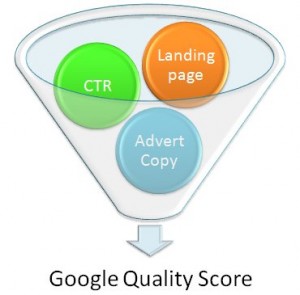 Matthew Mierzejewski at the Rimm-Kaufman Group Blog has published an excellent post on why negative keywords do not affect Google AdWords Quality Scores. (He also debunks a few other cherished Quality Score myths.) In summary, he provides several sources from The Google itself that unequivocally state that there is no relationship between adding negative keywords to an ad group and the Quality Scores of the keywords in that group.
Matthew Mierzejewski at the Rimm-Kaufman Group Blog has published an excellent post on why negative keywords do not affect Google AdWords Quality Scores. (He also debunks a few other cherished Quality Score myths.) In summary, he provides several sources from The Google itself that unequivocally state that there is no relationship between adding negative keywords to an ad group and the Quality Scores of the keywords in that group.
Yes, but…
That doesn’t mean that negative keywords play no role in boosting Quality Score. In my experience, using the “peel and stick” technique of moving promising exact match keywords to their own targeted ad groups does boost Quality Score in the long run, and negative keywords play an important, if supporting, role in that technique. (I wrote in detail about how to use this technique in my post “AdWords Peel and Stick Keywords: The Importance of Negative Sculpting.” Basically, in this technique you move the exact match of a broad or phrase match keyword that has been gaining a lot of impressions to its own ad group, where you give it ads that are highly relevant to that keyword. Then you add that keyword as an exact match negative to the original ad group in order to drive all of the traffic for that exact match to the new group.
The reason this increases Quality Score is because higher Quality Score is given to keywords that a) are most relevant to users’ search queries, b) are matched to a highly-relevant ad, and c) get a higher click-through rate. (Landing page relevance also figures in, but to a lesser degree.) It stands to reason, then, that a highly-focused (i.e., exact match) keyword in its own ad group with a highly-relevant ad (preferably using the keyword in the ad copy) should yield a higher Quality Score over time. The negative keyword plays an important supporting role in driving the traffic into that funnel.








